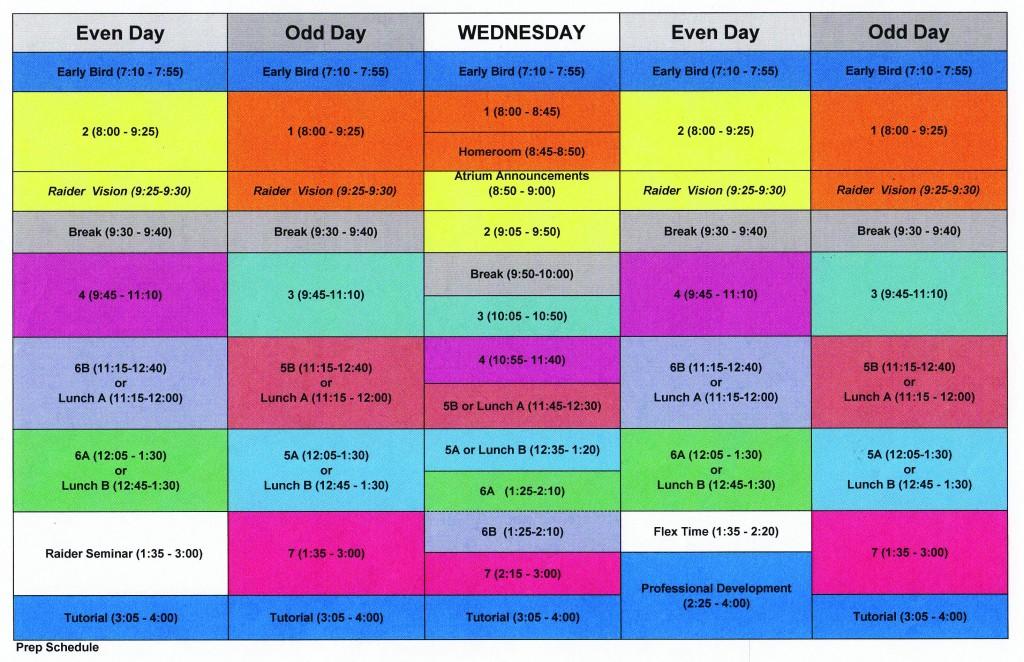 The school wide initiative to switch to block scheduling for the 2016-2017 has many students wondering how it will work.
The school wide initiative to switch to block scheduling for the 2016-2017 has many students wondering how it will work.
The switch comes as a way to accommodate student needs by providing additional class time within which to complete assignments.
“I think some of our happiest students are in classes where versions of it are already happening
such as the robotics team who comes in after school and have extended class time to build robots. The architecture teams work after school as well to build their presentations. I think everyone is going to like it… it’s better for students and lets them really earn their learning,” said Head of School Frank Steel.
The proposed schedule separates the week into alternating “A” days (even) and “B” days (odd). On Wednesdays, students will attend all their classes, for
45 minutes each. Lunch will take place either before or after 6th period (A days) or 5th period (B days). Early bird classes and tutorial times will not be affected with the new schedule. Therefore, students will see each class three times per week, as opposed to every day.
According to Visual Arts Department Chair Stacy Goldman, the idea of block scheduling is one that many teachers support, noting that longer class periods provide opportunities for more student-centered learning and the implementation of various resources.
“Teachers, overall, in all subject matters, have really been leaning into teaching a more hands on and student centered way. In order to
do this, as well as do it with the aid of technology, you need more time. So, while the block schedule does not add more time to the amount of
time that students spend in class each day, it just rearranges the way that time is spent so that teachers can go more in depth on the material,” said Goldman.
According to Goldman, who is part of the teacher committee on block scheduling, current research was taken into consideration when looking into the new schedule option, noting student success rate in block scheduling environments.
“Studies have shown that teaching and learning in a block schedule environment has been more effective. Students – specifically average students or struggling students – actually excel greater with block scheduling,” said Goldman.
The new schedule will also include a block entitled “Raider Seminar” where students will choose from an array of courses that are geared towards general knowledge or student interest. These courses are intended to provide an opportunity to “learn for learning’s sake,” according to Prep Principal Jonathan Schoenwald. Various proposed courses range from French cooking, to sewing, to preparing taxes. Students will be required to choose three Raider Seminars, which are split up into trimesters throughout the school year.
The proposal to switch to block has caused some concern among students, specifically those that are currently required to take on additional courses in order to meet their graduation requirements. However, students will have a chance to experience the tentative schedule during its two test weeks — one in January and the other in April.
“The way that the classes are structured now is all we know. The reason that we looked into block scheduling is because teachers were curious about the way that it worked. They felt like there wasn’t enough time. We know that lecturing is not the most effective way of teaching and we have to change it up; whether its with class activities or more reflection time. It is meant to be more of student-based learning,” said Schoenwald.
Block scheduling will officially start during the 2016-2017 school year.




